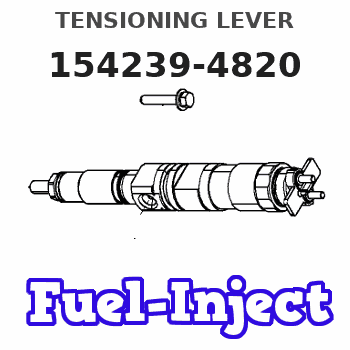Information tensioning lever
BOSCH
9 421 616 296
9421616296
ZEXEL
154239-4820
1542394820
ISUZU
1157259130
1157259130

Rating:
Include in ###:
Cross reference number
Zexel num
Bosch num
Firm num
Name
154239-4820
9 421 616 296
1157259130 ISUZU
TENSIONING LEVER
C 14GJ TENSION LEVER GOV
C 14GJ TENSION LEVER GOV
154239-4820
9 421 616 296
ME755852 MITSUBISHI
TENSIONING LEVER
C 14GJ TENSION LEVER GOV
C 14GJ TENSION LEVER GOV
Information:
Downhill
When cresting a hill, the decision of whether to use power or not on the downside of the hill must be made. Best fuel economy results from using minimum power to get back to speed after climbing a grade. However, care must be taken not to allow the engine to overspeed. This engine should not exceed 2300 rpm.If equipped with an exhaust brake, the engine should not exceed maximum braking rpm. Refer to "Auxilliary Exhaust Brakes" section of this manual.Saving Fuel On Hills
Rolling hills provide a great opportunity to reduce fuel. Avoid downshifting on small hills. If a hill can be topped without downshifting, even if the engine lugs to the peak torque rpm (1100-1200), the truck should not be downshifted.On long grades that require one or more downshifts, let the engine lug back to the peak torque rpm. If road speed stabilizes with the engine running at or above peak torque rpm, remain in that gear. When going down hill, use gravity instead of engine power to regain vehicle speed.Long steep down grades should be anticipated. Vehicle speed should be reduced before cresting the top of a hill and proceeding down a long steep grade. The way to achieve maximum fuel efficiency, is to minimize the amount of braking that is used to maintain a safe vehicle speed.The engine's ability to hold the truck back increases with engine speed. A gear should be selected that runs the engine near the high engine rpm limit for long steep hills when braking is required.Speed reductions and future stops should be anticipated ahead of time to save fuel. Downshifts should be avoided and the amount of braking minimize
When cresting a hill, the decision of whether to use power or not on the downside of the hill must be made. Best fuel economy results from using minimum power to get back to speed after climbing a grade. However, care must be taken not to allow the engine to overspeed. This engine should not exceed 2300 rpm.If equipped with an exhaust brake, the engine should not exceed maximum braking rpm. Refer to "Auxilliary Exhaust Brakes" section of this manual.Saving Fuel On Hills
Rolling hills provide a great opportunity to reduce fuel. Avoid downshifting on small hills. If a hill can be topped without downshifting, even if the engine lugs to the peak torque rpm (1100-1200), the truck should not be downshifted.On long grades that require one or more downshifts, let the engine lug back to the peak torque rpm. If road speed stabilizes with the engine running at or above peak torque rpm, remain in that gear. When going down hill, use gravity instead of engine power to regain vehicle speed.Long steep down grades should be anticipated. Vehicle speed should be reduced before cresting the top of a hill and proceeding down a long steep grade. The way to achieve maximum fuel efficiency, is to minimize the amount of braking that is used to maintain a safe vehicle speed.The engine's ability to hold the truck back increases with engine speed. A gear should be selected that runs the engine near the high engine rpm limit for long steep hills when braking is required.Speed reductions and future stops should be anticipated ahead of time to save fuel. Downshifts should be avoided and the amount of braking minimize
Have questions with 154239-4820?
Group cross 154239-4820 ZEXEL
Isuzu
154239-4820
9 421 616 296
1157259130
TENSIONING LEVER
Mitsubishi
154239-4820
9 421 616 296
ME755852
TENSIONING LEVER
